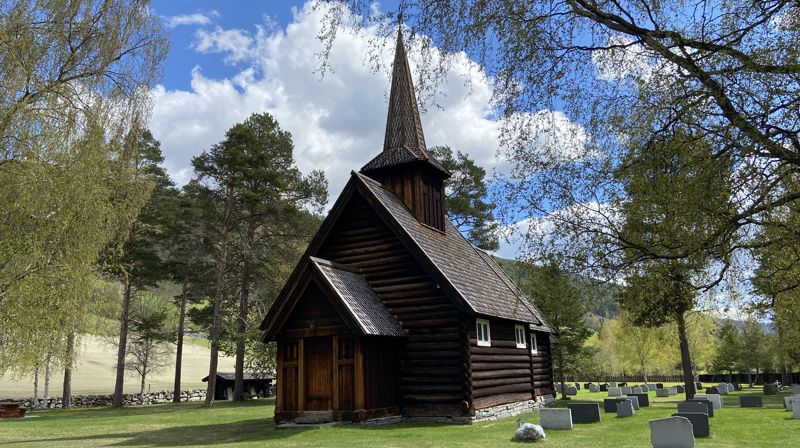Bjølstad Chapel is a medieval stave church building, with unique portal planks in the "Urnes style". The chapel was originally part of a church that stood on the Bjølstad farm, a couple of kilometers west of Heidal Church.
Bjølstad was the seat of one of the noble families in the country, the Bratt family, who settled in Gudbrandsdalen in the Middle Ages. The chapel dates from around 1531 and shows a transitional form between stave and stave architecture. The chapel is on the National Heritage Agency's list of automatically protected churches.
The chapel is unique, since most church buildings from the Middle Ages are stave churches, and there are only a few stave church buildings left from that time. The chapel's entrance has perhaps the country's oldest portal posts. The portal has probably been used in earlier stave churches and stave churches. The carvings in Bjølstad Chapel are deep, flat, and quite simple in execution. They are more angular and flat than, for example, the Urnes portal. The carvings have similarities to the Jelling stones in Denmark, which date from the 9th century.
In 2024, a dating of the portal planks was carried out. The planks were dismantled and went through a process of photodendro and radiocarbon dating. The result shows that the tree in the right plank has a germination time somewhat before the year 880 and felled after the year 1014. What is striking is that the left plank shows a significantly later dating. Here, the germination time of the tree is supposed to be somewhat before the year 1043 at the earliest and the felling time somewhere in the period 1159 - 1219. This has caused great concern among art historians, who have expressed uncertainty about the dating, as this style had long since fallen out of use at that time.
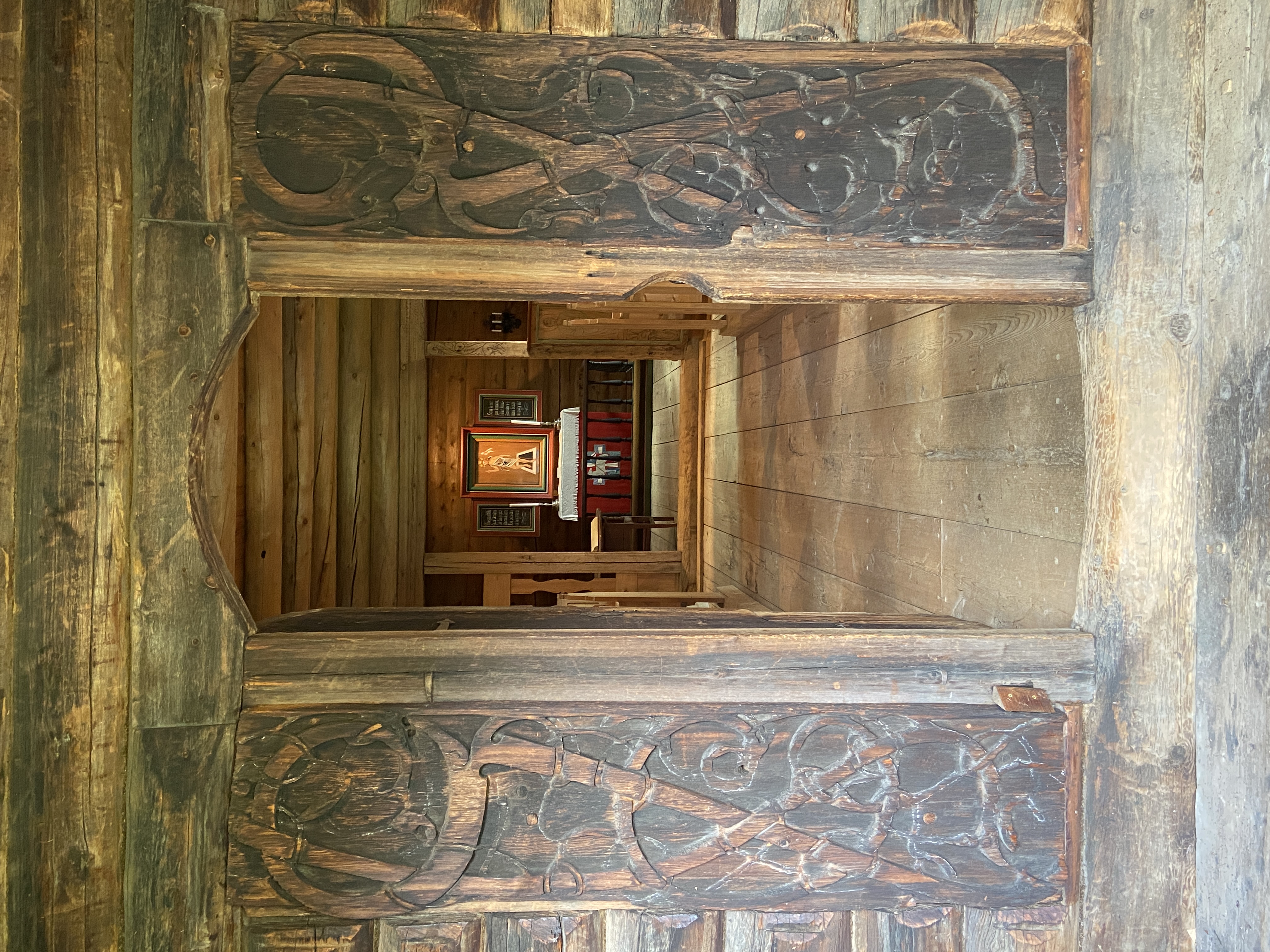
The portal planks at Bjølstad Chapel.
Bjølstad church was "left over" when the new and larger Heidal church was completed in 1754. The owner of Bjølstad farm bought the church and used it as a barn around 1807. The sacristy and the porch were demolished and removed, but the two portal posts remained and were later protected with a lockable cover. In 1820, the Bjølstad owner moved the house down to the embankment below the farm because he needed the land for a storehouse. There, the "church roof" stood as a hay barn and warehouse until Heidal Ysteri had to have the land for a new warehouse in 1946. Then the house was taken down and stored pending a possible reconstruction.
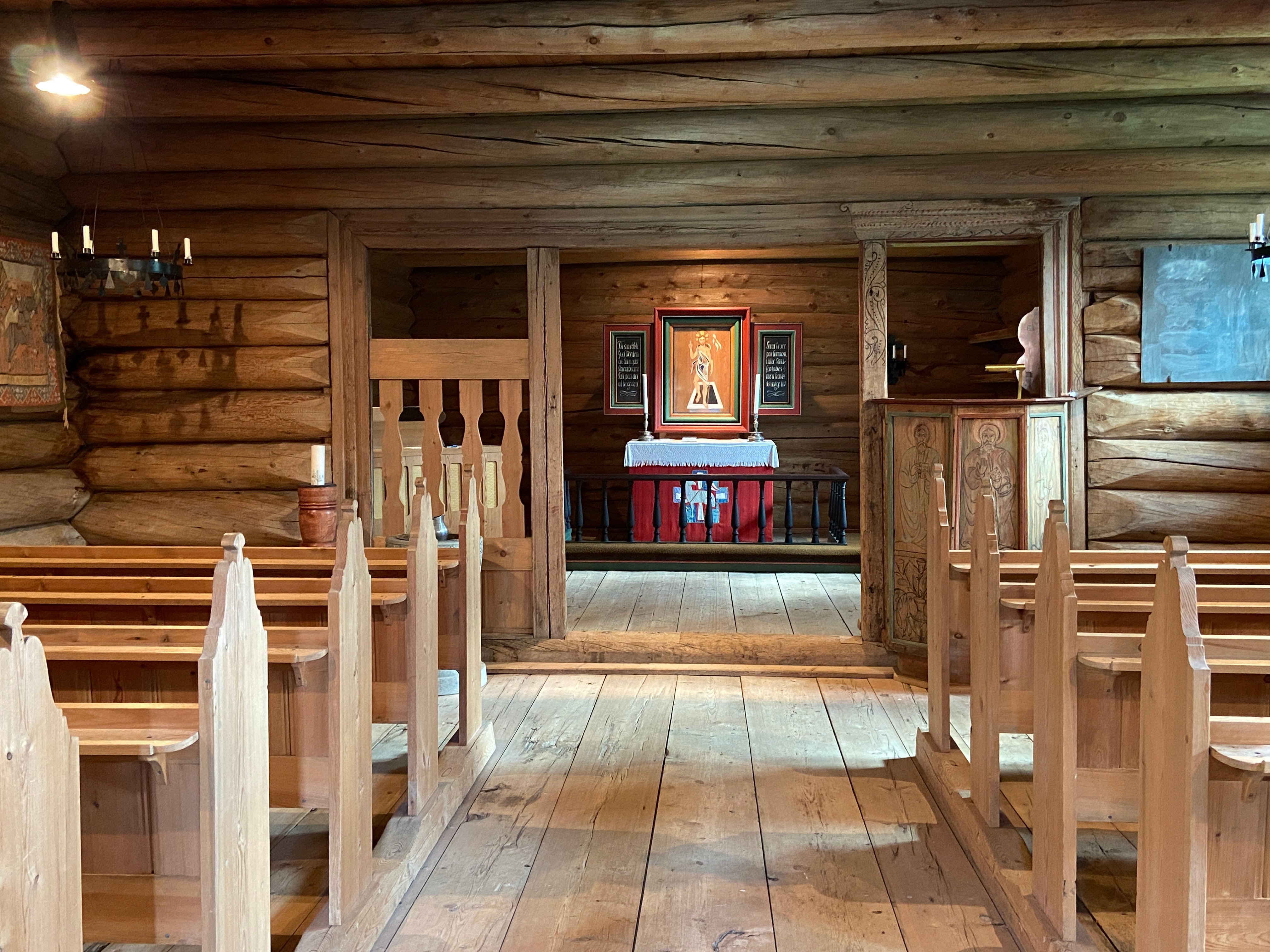
The old Heidal church "Thabor" burned down in 1933. The owner of Bjølstad, Thor Tofte, gave the old church and the remaining equipment to the village so that Heidal could have a temporary church until a new one was built. At the same time, Peder Heringstad gave land so that it could be placed near the new one that was to be built. For several reasons, there was no reconstruction at that time.
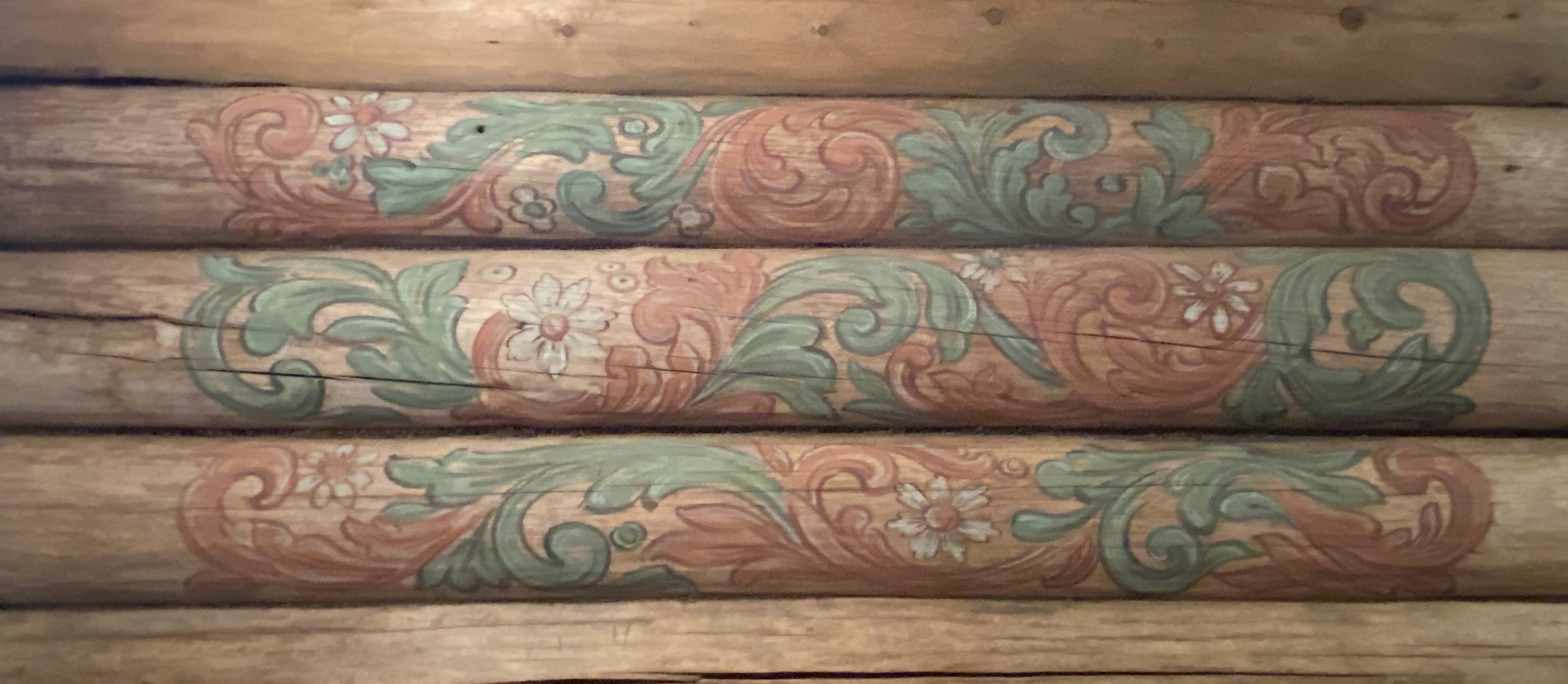
Around 1950, architect Bredo H. Berntsen was contacted. It took time to get the plans approved, because there was some doubt about what shape the church had originally had. Raising money for the work was not easy either, but with public grants and private donations, the financing was in place. In 1956, the foundation stone was laid. Part of the building had been lost and had to be reconstructed, including the choir and sacristy. Timber and planks from old houses were used to good effect. The choir was built from timber from a stable in Bjølstad. The outer panel for the sacristy was sawn from similarly old timber. The floorboards in the choir are from a barn in Søre Harildstad, and it is still possible to see the mark of a horseshoe in them. Thousands of wood shavings were needed for the roofing.

The pulpit is original from the old church.
The original altarpiece was gone, and a new altarpiece, benches and various other things had to be made new. Mathias Fjerdingren was responsible for this work, based on drawings by the Norwegian Ministry of Antiquities. Borgar Hauglid painted the altarpiece and designed the antependium. The altar cloth, with its uniquely beautiful sprang pattern, is the work of Ella Harlaug. Consultant Finn Krafft at the Norwegian Ministry of Antiquities has reconstructed the original decoration on the old pulpit. He has also recovered some old ornamentation on the timber walls.
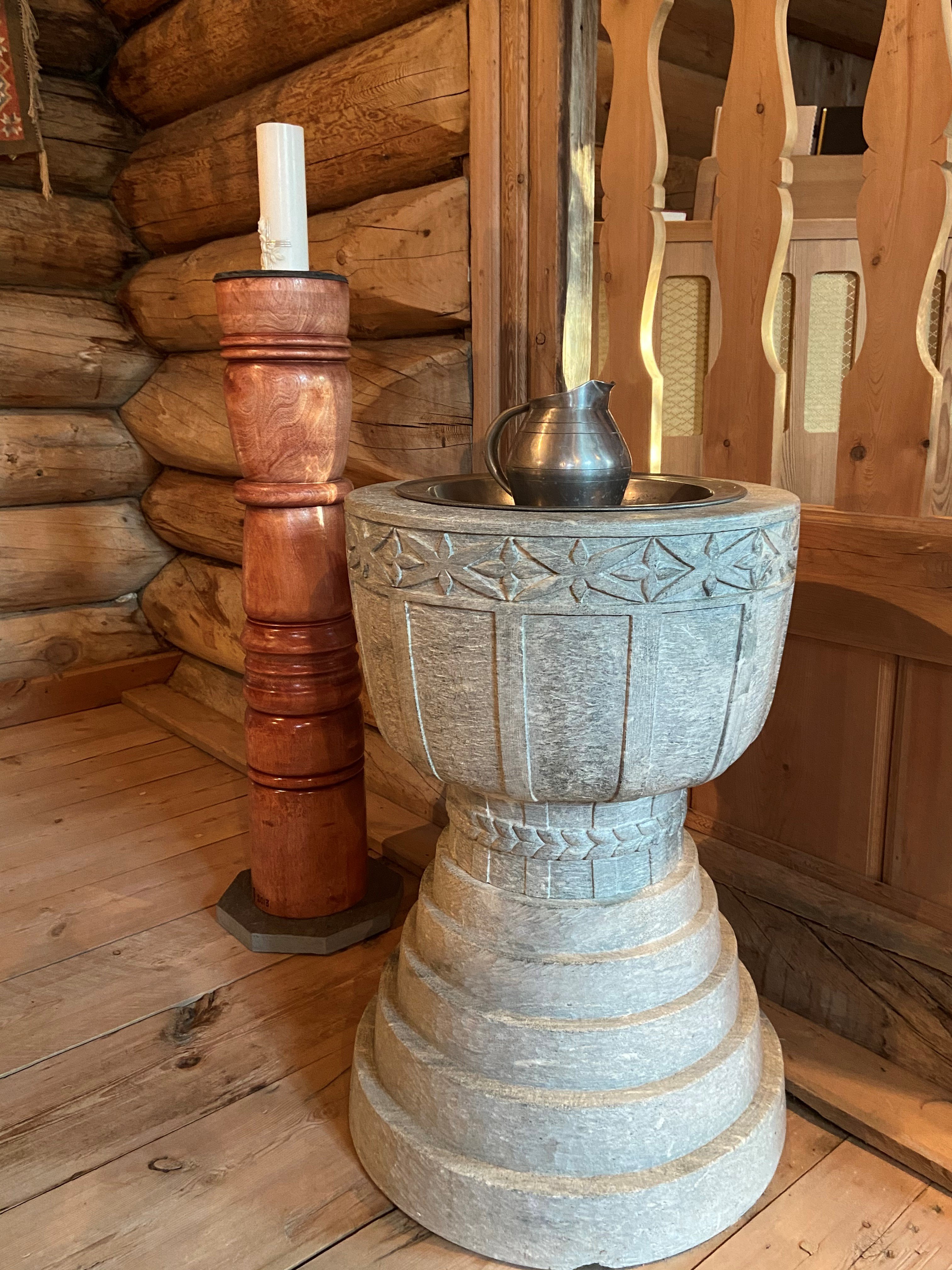
The baptismal font is a copy of the one that was lost in the fire in the old Heidal church.
As a fine replacement for the old baptismal font that was lost in the fire in Heidal church in 1933, Trygve Fjerdingren made a new one, a copy of the old one, also of plaster, after a sketch that architect Barnet had drawn at the turn of the century. The old spire was put back in place on the tower, where the two bells again, after almost 250 years, call people to church service, and the approximately 1000-year-old portal posts welcome people into one of the oldest houses of worship in the country.
On July 26, 1964, Bjølstad Chapel was rededicated.

